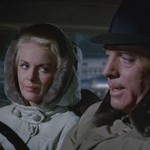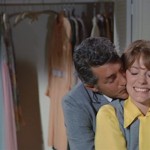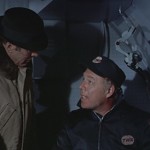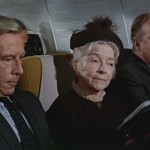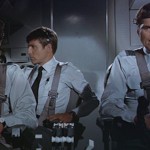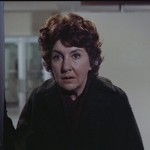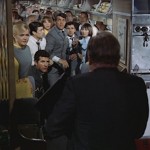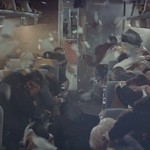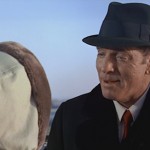
Airport – 1970
OK, this is a disaster movie. How many bad conditions, bad decisions, bad coincidences, and bad luck can we heap on our characters without killing them? As a concept, it might sound a bit cheesy. I kind-of went into the film with that kind of an attitude, something, I’ll fully admit, I should not have done. But with one of my favorite comedy films of all time, 1980’s Airplane, being a parody of this movie and its genre, it was hard not to look at it with a sense of humor. As I watched, I kept thinking to myself, “Looks like I picked the wrong week to stop sniffing glue!”
Airport had some pretty recognizable names in its cast like Burt Lancaster, Dean Martin, Jacqueline Bisset, and George Kennedy, giving the film some star power. And though it was certainly not the first disaster film ever made, it inspired a plethora of other disaster films in the 1970s like 1972’s The Poseidon Adventure, and 1974’s The Towering Inferno. There was even a sequel made called Airport 1975 which brought back George Kennedy to reprise his character.
Lancaster played Mel Bakersfeld, an airport manager whose wife is leaving him because he is more married to his job than to her. Dean Martin played his brother-in-law, Vernon Demerest, who was also the co-pilot of the ill-fated Boeing 707. Bisset played Gwen Meighen, the chief stewardess and Vernon’s pregnant mistress. Kennedy played Joe Patroni, the chief mechanic for the airline. Aside from Patroni, we can already see that not only was disaster plaguing the airport, it was plaguing the lives of its employees.
And what were the disasters they had to deal with? Actually, there were really only two. There was the snowstorm that caused a plane to get stuck on the only available runway, and the depressed Mr. Guerrero, played by Van Heflin, who brings a bomb on the plane to commit suicide so that his wife can collect insurance money.
The director, George Seaton, did a great job of building the tension over the course of the film. However, I have to mention the slightly anticlimactic ending. I mean, the Mr. Guerrero detonates his bomb and blows a hole in the side of the aircraft, but in the end, the plane lands safely and that’s about it. After the bomb went off, a lot of the tension was lost. The other plane had been removed from the runway, and the calm landing in the snowy airport had no real complications. The ending would have been much more exciting if the other plane had still been on the runway and the landing aircraft had to swerve to avoid crashing into it… or something like that.
Part of the film’s charm was the colorful cast of passengers that were on the flight. However, the most unnecessary of these was the character of Mrs. Quonsett, played by Helen Hayes. She was a serial stowaway who had no real contribution to the plot until the crew made their attempt to nab Mr. Guerrero’s bomb. They simply spent far too much time on her back story. But for some reason, Helen Hayes was actually nominated for Best Supporting Actress for her ridiculous role.
The main cast all did a good job. I have to mention that this is one of the few rolls in which Burt Lancaster didn’t over-act his part, and as a result, he did a good job. Kennedy was good, as was Martin. But I’d like to give Bisset a special thumbs-up for her good performance. Her character was realistic and likable. This is the first film in which I can remember seeing her, and I liked what I saw.
Other notable actors in the film were Barry Nelson as Anson Harris, the pilot of the airplane, and Jean Seberg, the public relations director of the airport, and Mel’s love interest. But for me, a real standout was Maureen Stapleton, playing the part of Mrs. Guerrero who has to deal with the horrifying knowledge of her husband’s insane plan. She really impressed me with her emotional performance.
